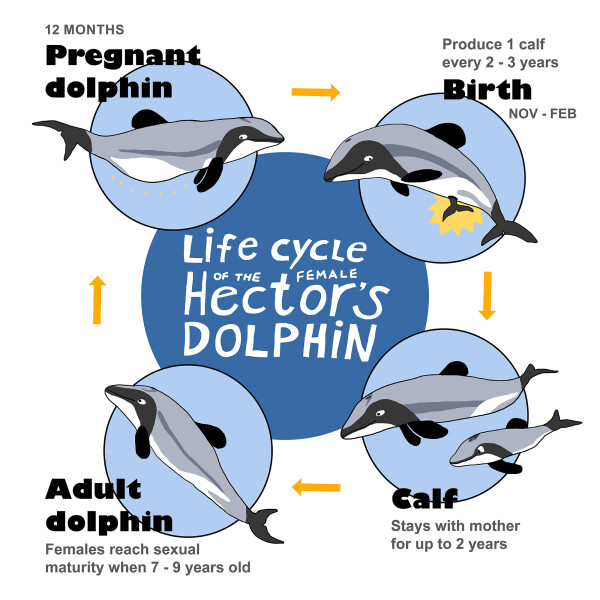From their first breaths in shallow waters to navigating life as social, intelligent adults, Hector’s dolphins live extraordinary lives just beneath the waves.
Reproduction ~ A delicate balance
Before reproduction takes place, Hector’s dolphins engage in complex and sometimes playful courtship behaviours. Pairs may swim together in synchronized movement, chase each other, and use vocalizations and body language to communicate their intentions. This courtship can last several days and often strengthens social bonds with pods. Mating itself is quick and agile, typically occurring belly-to-belly and may be repeated multiple times over a period of days.
After a successful mating, a female carries her calf for 10 to 12 months. She will give birth only once every 2 to 4 years to a single calf making each new calf incredibly precious. Births occurs in the calm waters close to shore.
Birth ~ A new dolphin enters the world!
Hector’s dolphins are typically born during the warmer months, between November and mid-February.
At birth, the calf is around 60–80 cm long and stays close to its mother. The bond between mother and calf is incredibly strong: calves nurse for up to a year and rely on their mothers for protection and guidance during this vulnerable stage.
Juvenile Stage ~ Learning to be wild
As the calf grows, it begins to explore more of its environment, slowly learning the complex skills needed to survive in the wild. This includes how to hunt small fish, avoid predators (such as orcas and sharks), and communicate with other dolphins using echolocation and body language.
This juvenile stage can last several years. During this time, dolphins form close-knit social groups, often made up of family members or individuals of similar age.
Maturity ~ Reaching adulthood
Hector’s dolphins reach sexual maturity between the ages of 7 and 9 years. Unlike many other animals, they do not reproduce every year.
With a life expectancy of about 20 to 25 years Hector’s dolphins live relatively long lives, especially for such small marine mammals.
